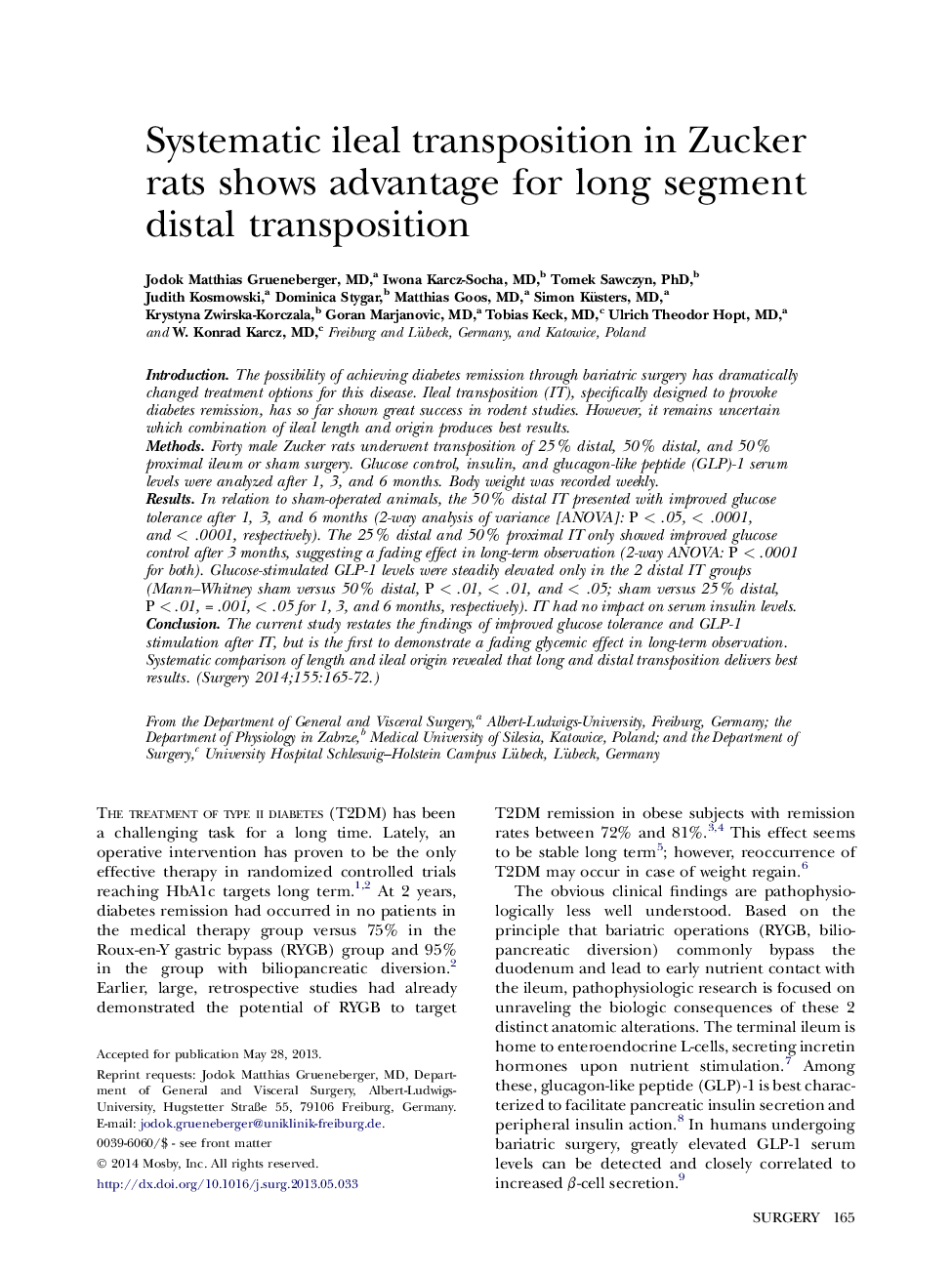| Article ID | Journal | Published Year | Pages | File Type |
|---|---|---|---|---|
| 4306870 | Surgery | 2014 | 8 Pages |
IntroductionThe possibility of achieving diabetes remission through bariatric surgery has dramatically changed treatment options for this disease. Ileal transposition (IT), specifically designed to provoke diabetes remission, has so far shown great success in rodent studies. However, it remains uncertain which combination of ileal length and origin produces best results.MethodsForty male Zucker rats underwent transposition of 25% distal, 50% distal, and 50% proximal ileum or sham surgery. Glucose control, insulin, and glucagon-like peptide (GLP)-1 serum levels were analyzed after 1, 3, and 6 months. Body weight was recorded weekly.ResultsIn relation to sham-operated animals, the 50% distal IT presented with improved glucose tolerance after 1, 3, and 6 months (2-way analysis of variance [ANOVA]: P < .05, < .0001, and < .0001, respectively). The 25% distal and 50% proximal IT only showed improved glucose control after 3 months, suggesting a fading effect in long-term observation (2-way ANOVA: P < .0001 for both). Glucose-stimulated GLP-1 levels were steadily elevated only in the 2 distal IT groups (Mann–Whitney sham versus 50% distal, P < .01, < .01, and < .05; sham versus 25% distal, P < .01, = .001, < .05 for 1, 3, and 6 months, respectively). IT had no impact on serum insulin levels.ConclusionThe current study restates the findings of improved glucose tolerance and GLP-1 stimulation after IT, but is the first to demonstrate a fading glycemic effect in long-term observation. Systematic comparison of length and ileal origin revealed that long and distal transposition delivers best results.
